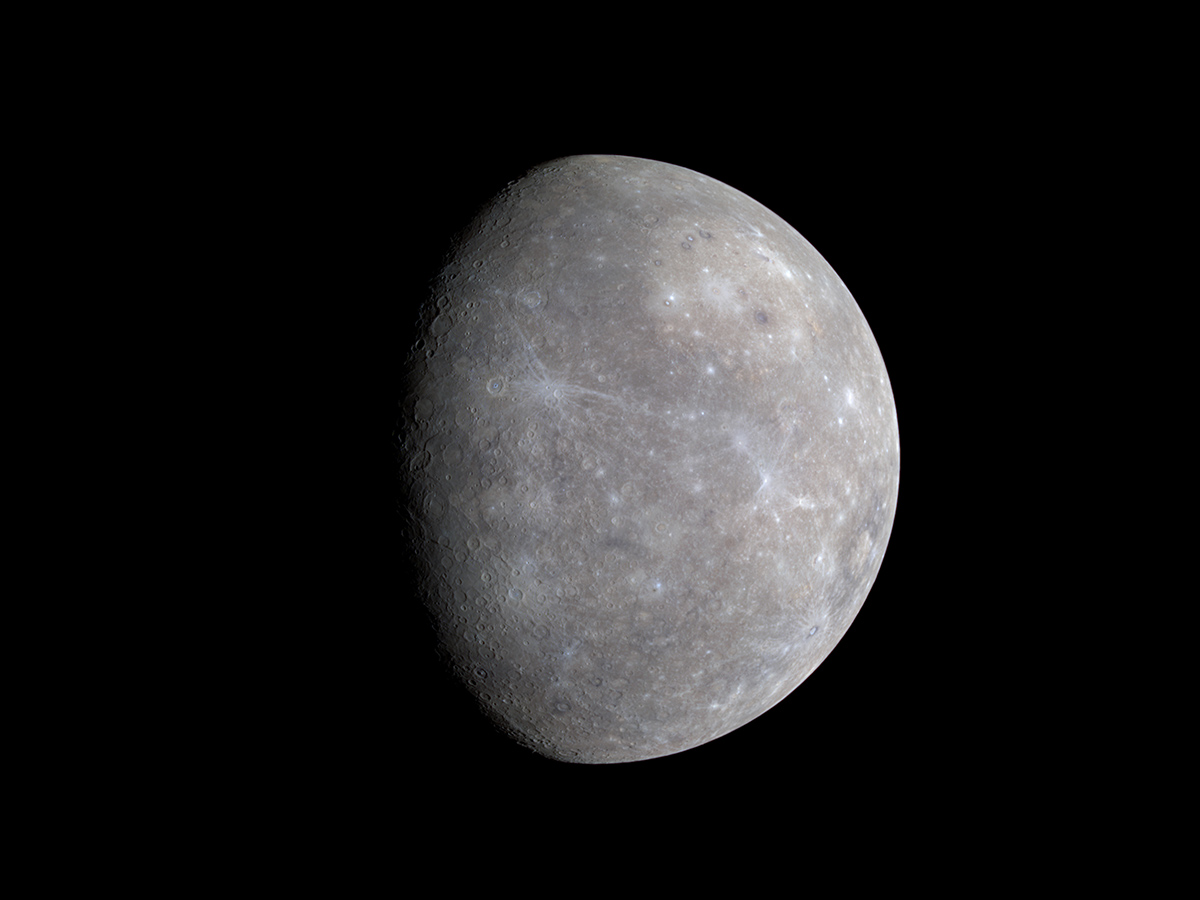Tiny Mercury May Have a Solid Metallic Core That Rivals Earth's

A solid metallic core nearly as large as Earth's might be lurking deep within the solar system's smallest planet.
That's according to new research based on data gathered by NASA's Mercury Surface, Space Environment, Geochemistry and Ranging (MESSENGER) mission. That spacecraft spent four years circling the tiny planet before intentionally crashing on Mercury's surface. Now, scientists have used data from near the end of the probe's mission to peer deeper than ever into the planet.
"Every new bit of information about our solar system helps us understand the larger universe," Antonio Genova, lead author on the new research and an assistant professor at Sapienza University of Rome, said in a statement.
Related: Photos of Mercury from NASA's Messenger Spacecraft
As the MESSENGER spacecraft orbited the tiny planet, the probe pinpointed the poles that Mercury rotates around. One of the instruments aboard also carefully measured small variations in local gravity.
Those variations cause a spacecraft to speed up or slow down, just a hair, and are the result of patches of the planet that are more or less dense than the average. They were particularly detailed near the end of the spacecraft's mission, when engineers sent the probe as close as 65 miles (105 kilometers) above the planet's surface.
Combining that information, scientists could build a detailed model of the tiny planet, then play around with variables like the size of a solid inner core and compare the results with reality. That modeling suggested both that Mercury should have a solid inner core and that this core should be quite large.
Get the Space.com Newsletter
Breaking space news, the latest updates on rocket launches, skywatching events and more!
In fact, their most compelling model setting featured a solid inner core 1,260 miles (2,000 km) across. That's about half the size of Mercury's entire core, which takes up 85% of the planet. Even by terrestrial standards, it's huge; Earth's solid inner core is about 1,500 miles (2,400 km) wide.
The research is described in a paper published March 15 in the journal Geophysical Research Letters.
- What Would It Take to Land on Mercury? It's Time to Find Out, Scientists Say
- BepiColombo in Pictures: A Mercury Mission by Europe and Japan
- See Amazing Photos of Mercury by a Doomed NASA Spacecraft (Video)
Email Meghan Bartels at mbartels@space.com or follow her @meghanbartels. Follow us on Twitter @Spacedotcom and on Facebook.
Join our Space Forums to keep talking space on the latest missions, night sky and more! And if you have a news tip, correction or comment, let us know at: community@space.com.

Meghan is a senior writer at Space.com and has more than five years' experience as a science journalist based in New York City. She joined Space.com in July 2018, with previous writing published in outlets including Newsweek and Audubon. Meghan earned an MA in science journalism from New York University and a BA in classics from Georgetown University, and in her free time she enjoys reading and visiting museums. Follow her on Twitter at @meghanbartels.









